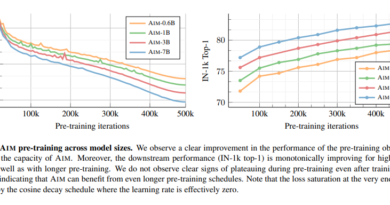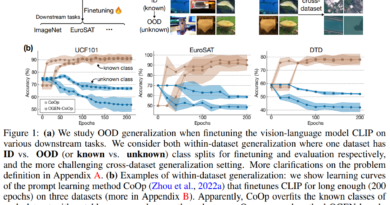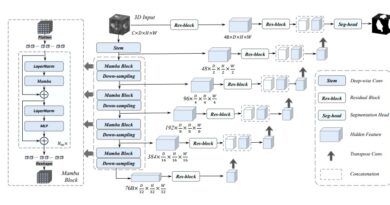Optimizing Data Annotation with Automated QC While Scaling Up
Data annotation is an essential process for training machine learning models. It involves labeling data to provide the necessary information for the model to learn and make accurate predictions. However, as the scale of data annotation increases, managing the quality control (QC) of the annotations becomes more challenging. In this article, we will explore how to effectively manage data annotation with automated QC while scaling up.
The Importance of QC in Data Annotation
Before diving into the strategies for managing data annotation with automated Quality control, let’s first understand why QC is crucial in the annotation process. Quality control ensures that the labeled data is accurate, consistent, and reliable, which directly impacts the performance of machine learning models. Here are a few reasons why QC is important:
- Model Performance: High-quality annotations lead to better model performance as the model learns from accurate and reliable data.
- Consistency: Consistent labeling ensures that similar data instances receive the same annotations, reducing confusion and improving model understanding.
- Error Detection: QC processes help identify annotation errors or inconsistencies, allowing them to be corrected before they impact the model’s performance.
- Data Bias: QC also helps in identifying and mitigating data biases, ensuring fair and unbiased model predictions.
Now that we understand the importance of QC in data annotation, let’s explore some strategies for managing it effectively while scaling up.
Automation of QC Process
Automating the QC process can significantly improve efficiency and reduce manual effort. Here are some strategies for automating the QC process:
- QA with Generative AI Models
Generative AI models can be integrated into the workflow to assist in the QC process. These models can perform tasks like visual question answering or multimodal AI to check the accuracy of annotations. For example, prompts can be given to the generative AI models to count objects or verify detection classes in images. The results provided by the models can be checked against the human annotations to assess accuracy.
- QA with Active Learning-Based Models
Active learning-based models can be used to identify high-confidence and low-confidence predictions. Scenarios where the model’s inference differs from human annotations can be flagged for further review. Similarly, low-confidence predictions can indicate edge cases that need attention. By using active learning-based models, the QC process can be focused on challenging scenarios and areas where the guidelines might need improvement.
- QA with Unsupervised Learning Approaches
Clustering and embedding-based approaches can be applied to automatically group annotations based on similarity. By comparing these clusters with human-labeled classes, reviewers can focus on conflicting scenarios and minority clusters. This approach helps identify annotations that require additional review and analysis, especially in scenarios with a large number of annotations.
- QA with Self-Trained Models
If a model has already been trained on previous annotations, it can be integrated into the QC workflow to identify gaps between model-generated predictions and human-generated labels. This can help cross-check scenarios and identify areas where the model might need additional training or where guidelines need refinement.
- QA with Ground Truth Data
Ground truth data refers to high-quality annotations that have been verified by domain experts. By including ground truth data in the QC pipeline, reviewers can compare human annotations with the known correct annotations. This method helps ensure the quality of annotations and can also be used to generate more ground truth data with less effort.
- QA with Public Datasets
Leveraging public datasets can augment the QC process. By training models on public datasets relevant to the use case, AI teams can compare model predictions with human annotations. This comparison helps identify areas where the model’s performance differs from human expectations, leading to improvements in annotation guidelines and training processes.
- QA with Correlation Analysis Matching
Certain classes or objects might have a high correlation with each other. By analyzing this correlation, reviewers can quickly identify mislabeled annotations. For example, if the presence of one object precludes the absence of another object, inconsistencies can be identified and reviewed. Correlation analysis matching helps improve the accuracy and consistency of annotations.
- QA with Heuristics and Rule-Based Systems
Domain expertise can be leveraged to develop heuristics and rule-based systems to identify mislabeling. These systems can check for specific patterns or relationships between different classes and objects. By applying these heuristics and rules, reviewers can quickly flag annotations that do not adhere to predefined guidelines, improving the overall quality of annotations.
- QA with Inter Annotator Agreement
Inter annotator agreement involves multiple annotators labeling each image or data to create a consensus-based ranking. This approach helps mitigate subjectivity and ensures a more objective assessment of annotations. By considering multiple perspectives, the QC process becomes more robust and reliable.
Conclusion
Managing data annotation with automated QC while scaling up is a critical aspect of training machine learning models. By adopting strategies like QA with generative AI models, active learning-based models, unsupervised learning approaches, self-trained models, ground truth data, public datasets, correlation analysis matching, heuristics and rule-based systems, and inter annotator agreement, AI teams can effectively manage the QC process. Automating QC not only improves efficiency but also ensures the accuracy and reliability of annotated data, leading to better model performance.
Implementing an automated QC process is crucial for organizations to scale their data annotation efforts without compromising on quality. By leveraging the power of AI and advanced techniques, AI teams can streamline the QC process and enhance the overall performance of their machine learning models.
Explore 3600+ latest AI tools at AI Toolhouse 🚀.
If you like our work, you will love our Newsletter 📰




